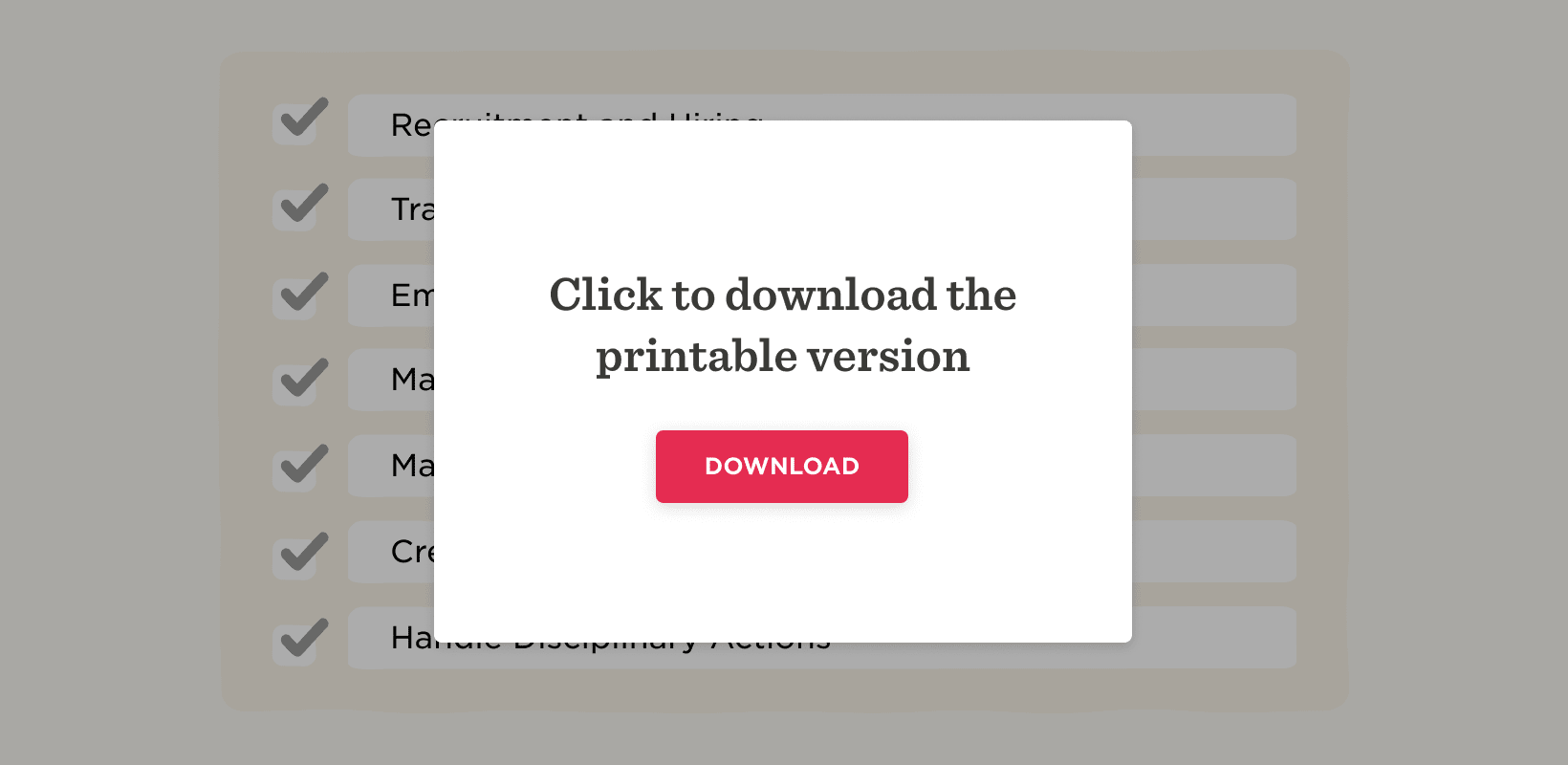What is compensation analysis?
Compensation analysis is an essential tool for building a people-focused business environment and making sure that you are making the right investments in the right places.
Compensation analysis evaluates your organization’s pay structure and determines whether it’s competitive and equitable. A successful analysis involves examining the base salaries, bonuses, benefits, and any other perks you offer, then comparing them internally between departments and externally with industry standards or competitor compensation.
An appropriate compensation strategy is key for attracting and retaining top talent and making sure everyone working for your organization feels valued. It’s also a useful way of assessing your department budgets, optimizing your spend, and creating an equitable environment that inspires wellbeing and avoids sparking resentment.
In this guide, we’ll outline the primary benefits of an effective compensation strategy, and explain in detail how to go about carrying out your own salary analysis. We’ll also work through a free compensation analysis template that you can use to get started on your research.

The benefits of conducting a compensation analysis
Conducting a compensation analysis is important for several reasons. Here are some of the most significant benefits it offers:
- A compensation analysis helps you to attract and retain top talent by offering competitive compensation packages that track accurately with going market rates. A compensation analysis can also give you the right insights to help you plan benefits packages that will keep your people motivated, driven, and highly productive.
- It keeps you abreast of the competition and the salary and benefits packages that your direct competitors may be offering. That way, you’re less likely to miss out on top talent tempted away by a superior or more attractive offer.
- By keeping your people satisfied, compensation analysis—combined with suitable compensation management and the right adjustments—leads to increased productivity, higher levels of engagement, and better overall business performance.
- Equally, compensation analysis is a vital way of ensuring pay equity among your people, helping you to regularly evaluate your pay structures and identify any disparities. With promoting diversity and inclusion rightly a top priority for many of today’s businesses, compensation analysis is here to help. By demonstrating your commitment to equity, you’ll foster a positive company culture built on transparency and honesty, and help your organization avoid potential legal issues related to pay discrimination.
- A compensation analysis can reveal opportunities to provide further motivation to your people, to remunerate team members in different ways, or to add additional incentives. It might even reveal gaps in your teams which, if addressed, can increase your overall output.
- Finally, a compensation analysis gives you data that can inform more accurate decision-making about resource allocation. It can help you to optimize your people budget and invest in the right training, benefits, and perks that help keep your teams firing on all cylinders.
How do you perform a compensation analysis?
Performing a compensation analysis requires you to follow several steps to make sure your findings are accurate and your process is thorough. It’s important to take a methodical approach so you don’t leave any stone unturned as you assess your current pay practices against the competition.
Here’s how to do a compensation analysis:
Step one: Define your job roles and responsibilities and gather your data
It almost goes without saying that it’s incredibly difficult to effectively assess your company’s compensation practices without a clear understanding of each job role. Start your analysis by clearly defining the roles, responsibilities, and requirements of each position within your organization, so that you have the foundation you need to compare your existing structure with industry standards. As the world of work evolves, people become more agile, and “liquid teams” become more common, it’s even more important to try to define the precise value each position delivers for your business.
If you classify your compensation structure into salary bands, ensure this information is current and complete across your organization. Collect all your data in one place, such as by using our sample compensation analysis template below, and you’ll have everything you need to start assessing the market value of each role.
Step two: Gather market insights
Next, it’s time to look outside your company. Collect information on other businesses’ compensation packages, both within your industry and beyond. For global companies, it’s also important to understand the regional and national differences that affect compensation and to separate your data accordingly.
To find out what others are offering, look at research reports, online databases, and current job listings. Be sure to focus on companies of a similar size and scope to yours, as this can significantly impact compensation levels, making it much easier to draw a clear comparison.
Step three: Benchmark your jobs
Next, it’s time to compare the information you gathered in the first two steps. Where possible, benchmark your job roles against the market data you’ve collected; however, it’s important to note that this simply won’t be possible for every role, as you’ll come up against incomplete data, especially when it comes to competitors’ salaries.
As a result, consider establishing “benchmark jobs” within your organization, from which you can gauge your overall competitiveness. Select roles with the clearest data and use these as markers for the rest of your findings.
Step four: Assess your internal equity
Use your benchmarking to also assess the internal equity of your pay structure: not just against external measures, but also within teams and between similar roles. Are people with long tenures being rewarded appropriately? Do your base salaries align across roles of similar seniority? Are any departments or individuals coming off worse in comparison with others?
Asking the hard questions about your findings is the best way to identify any discrepancies or inequalities, and gather the information you need to change things for the better.
You can also use these findings to create salary ranges for each position, which give you scope to take into account factors like experience, training, and performance when offering promotions, pay increases, or positions to new employees.
Step five: Forecast adjustments
Based on what you’ve found, summarize any adjustments that would bring you more in line with your market data or correct any discrepancies you’ve identified between teams or equivalent roles. By drawing up a full forecast before you make any changes, you can assess the likely impact on your budgets and whether you can alter things immediately or as part of an ongoing process to achieve greater equity.
It’s important to apply this forecast to future roles or those you’re advertising now, so that you can update your salary ranges and ensure everything matches up.
Analysis and beyond: Making use of your data
With your salary analysis complete, it’s time to implement changes and communicate those to your managers and teams. Making this process as transparent as possible will maintain trust among your people and support a positive company culture.
It’s important that you continue to carry out compensation analysis at regular intervals after your first assessment. That way, you can respond to market and organizational changes and be confident that your compensation structure remains competitive, equitable, and conducive to optimizing your performance.
<<Use these templates to carry out your own compensation analysis.>>
Compensation analysis template
Done correctly, a compensation analysis will help you attract and retain top talent, promote pay equity, and optimize resource allocation in your organization.
Based on the steps above, you can follow this compensation analysis example to begin assessing the equity and competitiveness of your existing pay structure.
Internal data collection
(When collecting your internal data, it’s important to include demographic data such as age, gender, and ethnicity, so that you can conduct a thorough analysis and ensure that no one is suffering from pay discrimination.)
| Categories | Data |
| Name | |
| Age | |
| Gender | |
| Ethnicity | |
| Job title | |
| Job description | |
| Job seniority | |
| Current base salary | |
| Benefits/commissions (where applicable) | |
| Working hours | |
| Location | |
| Tenure | |
| Last year’s salary adjustment | |
| Proposed salary range or band | |
| External data comparison | |
| Job title | |
| Job description | |
| Job seniority | |
| Average base salary | |
| Benefits/perks | |
| Percentage variance from your current compensation | |
| Proposed/forecast adjustments | |
| Specific jobs that require adjustment | |
| Global salary adjustment proposals |
<<Use these templates to carry out your own compensation analysis.>>
Recommended For Further Reading
Compensation analysis and HR tech
Depending on the size of your organization, carrying out a compensation analysis manually can be an incredibly time-consuming process. Not only is there a wide range of data to gather from managers, HR systems, and finance teams, but collating, entering, and then analyzing that data can also quickly become a real-time sink.
That’s where compensation management software comes in. It lightens your workload by displaying compensation data in a central dashboard and by making it easy to import and export data and visualize the impact of different adjustments.
Compensation and HR tech go hand in hand because of this functionality, and because it makes sense to carry out your compensation analysis within the system that holds all of your key people data. Look for a tool that can make life easier for you and which can unlock the kind of salary insights that help you support your business’s future growth and success.
Compensation analysis: The information you need to make positive change
Carrying out a compensation analysis is an important step for any business, allowing you to gather precise insights regarding your current salary structure, map it against external measures, and make sure you are being consistent and equitable with all of your people.
By being transparent and open about your compensation, benefits, and perks, you can build a positive company culture that supports employee wellbeing, driving higher retention rates and greater productivity. With the right HR tech by your side, carrying out regular, in-depth compensation analysis is easy.
